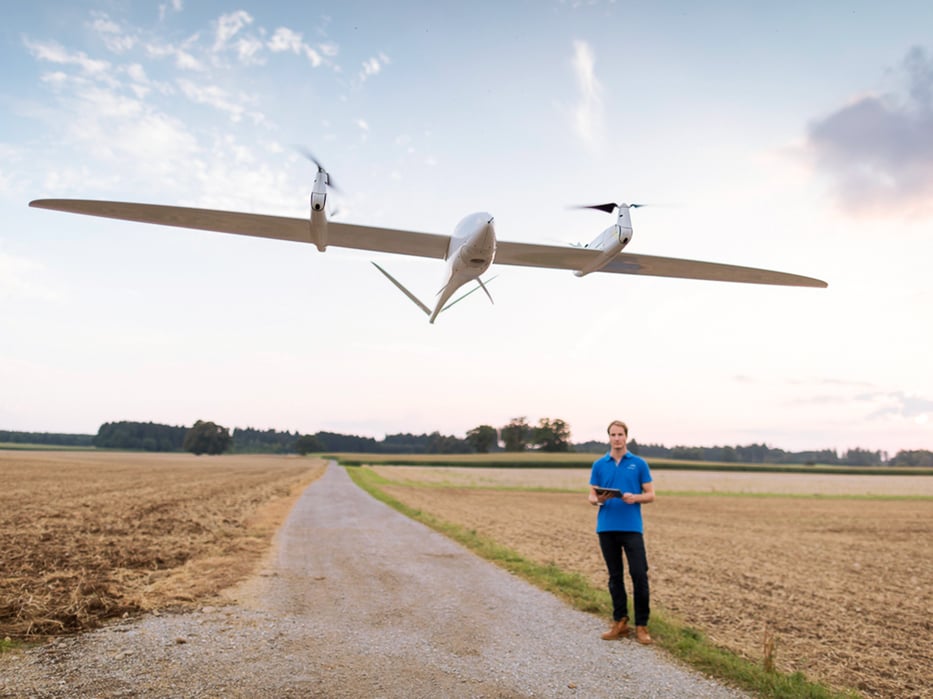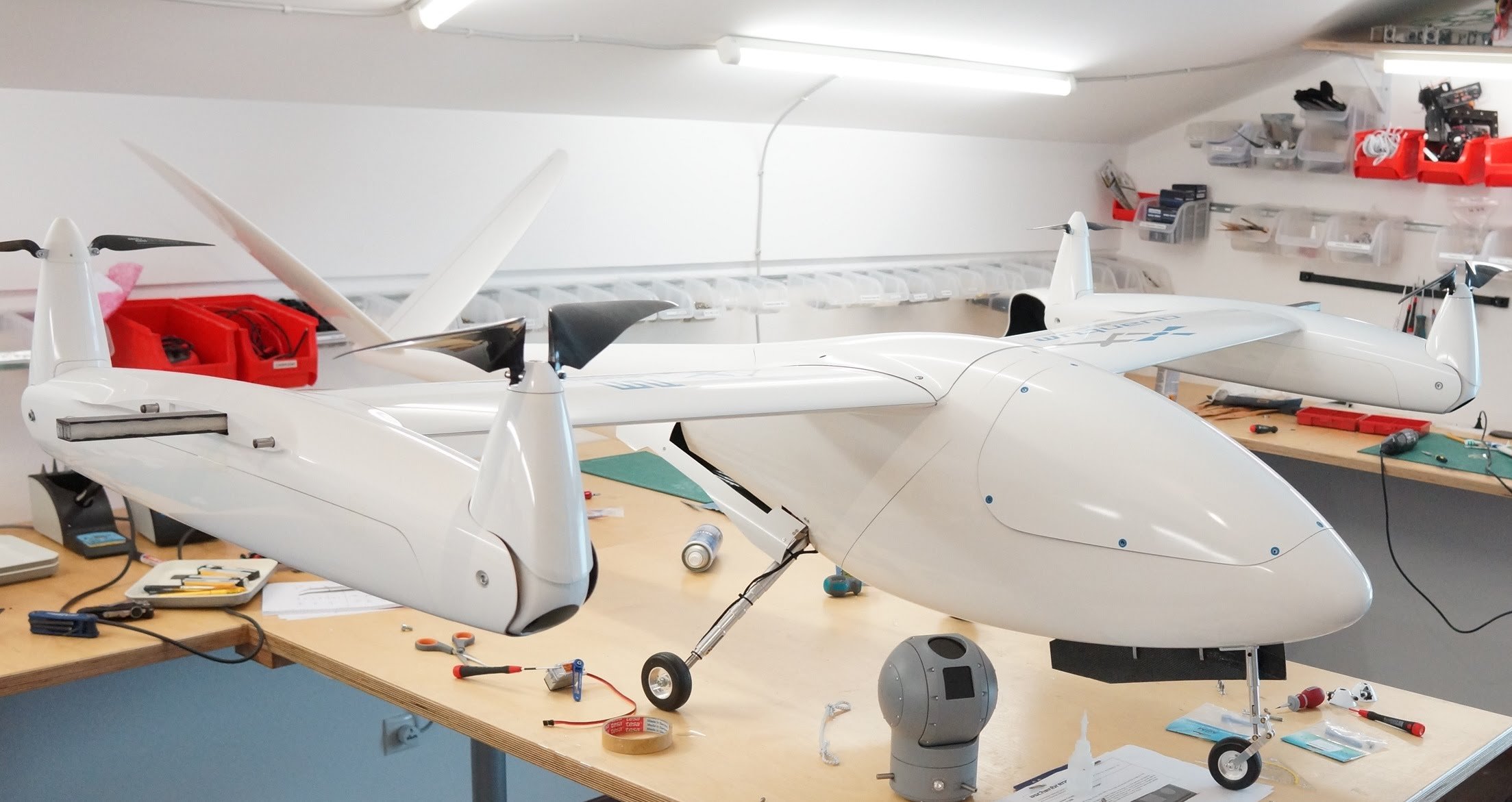
3D printed drones continue to trend upward as greater access to airspace is granted–and a bevy of advanced materials and technologies allow manufacturers like Shapeways and Quantum-Systems to take prototypes and end-use parts to the limit, disrupting design and product development barriers all along the way.
Simplicity in 3D design helps drones go the distance
Quantum-Systems is a long-time Shapeways partner, headquartered just outside of Munich. While they find that enthusiasts typically have seen drones and even use them, many are still uncertain about the features involved and the technology behind them. As CEO Sebastian Sattler makes clear, however, their goal is not to offer their customers technology that presents massive technological complexities; rather, their design team focuses on total simplicity and efficiency in design.
Quantum-System drones have demonstrated the ability to simplify processes too, disrupting common methods like delivering medical samples, transporting them by air instead with their Trinity F90 model.

Quantum-Systems has relied on 3D printing since the beginning
Since their founding in 2015, Quantum-Systems has relied on 3D printing services for prototypes and parts, offering expertise in development and operation of small UAVs with an emphasis on quality in design, construction, and production. With an interest in aerial applications that began as far back as age five, Sattler’s destiny seemed charted long ago.
Today, he heads Quantum-Systems with over 50 employees intensively working on combining range and electric efficiency in drones, imbuing them with the power to take off and land without extra equipment. This ties into unique offerings like their E-VTOL system—short for electric vertical take off and landing. The name is quite literal in terms of what it means for drones, allowing them to take off and land vertically just like a full-size plane or helicopter would. Notably, they also take off from a small space and then fly fast, with long endurance. None of this is possible, however, without strength in design and materials, as Sattler talked about extensively in a recent webinar, ‘Soaring High with Drones, and 3D Printing.’
The Quantum-Systems design team is passionate about what they do, and they do it well; however, they often see a divide between what the average lay person thinks drones do and what is happening in reality in terms of true applications. A lot goes on behind the scenes in making sure a drone is suitable for completing its skyward mission, including decking it out with all the necessary accoutrements–depending on the application.
While much is changing and the options are continually expanding for drones and 3D printed drone frames, there are still ongoing challenges like legal complexities regarding where drones can actually fly. Many companies reaching out for drone technology or services, however, are focused on very specific project requirements. This means Quantum-Systems may be using 3D scanning technology, or cameras that include zoom and infrared options. Many different drone parts, including camera casings bear 3D printed accessories, again with a focus on lightweight, super durable materials.

3D printed drone parts are rigorously tested
Testing is critical for drone technology, and Quantum-System performs a lot of that. Their development team believes in rigorous evaluations of 3D printed parts to back up reliability, and this keeps them busy assessing parts in the lab, as well as flying their drones outside every day.
Wind is a definite concern, and while Quantum-Systems has intelligent flight systems for detecting the wind and measuring whether or not conditions are safe, drones must be built to last in unpredictable conditions–as well as withstanding the inevitable possibility of making a hard landing.
It’s not uncommon for Shapeways customers engaged in R&D to have 3D printers onsite, generally for prototyping purposes. The Quantum-Systems team is no exception, maintaining a handful of desktop printers for fast turnaround in designing and testing parts before they hand them off to Shapeways for refinement.

Shapeways takes Quantum-Systems designs to the next level
Once Quantum-Systems is serious about a design for a drone part, they work with Shapeways to further refine and then 3D print quality prototypes and parts, as was the case in 3D printing their drone antenna mount. They needed to optimize the accessory for the lightest weight possible, and in working with Shapeways they achieved their goal with a flexible honeycomb design.
“The tolerance is much better with the Shapeways parts,” said Sattler. “It’s much easier to print those difficult shapes in SLS because for a desktop system like FDM so much supports are needed.”
The ultimate goal at Quantum-Systems is to use 3D printed parts that are as lightweight as possible yet optimized for endurance and the ability to carry different payloads. They may spend a month prototyping and testing with Shapeways, using SLS, and then move on to injection molding for larger volume production. Sometimes they may only need one iteration of a part, sometimes more.
“For models like the Vector drone, we definitely optimized a lot of the parts, especially in the fuselage, because something as little as five grams really counts at the end,” said Sattler.
While there are some components that simply cannot be replaced via additive manufacturing yet, most drone parts can be 3D printed, points out Sattler. It is possible to make countless iterations–and economically so–making the product better every time.

3D printing in aerospace is here to stay
Overall, 3D printing is carving out a long-term niche in the aerospace industry, appealing to industrial engineers who are only too happy to make use of a powerful tool that allows them to make complex structures never before possible–and to create prototypes and change them at will, quickly. The combination of additive manufacturing with lightweight metals is what sets this technology apart, along with the availability of strong yet flexible materials like the ever-popular Nylon 12, in accompaniment to Selective Laser Sintering or Multi Jet Fusion 3D printing.
The benefits which make 3D printing so enticing to the aerospace industry easily transfer to unmanned aerial vehicles (UAVs) as they surge in popularity for a fascinating array of applications, including the many typical hobbyist endeavors, military operations, search and rescue missions, tasks for agriculturalists, surveying and photography for real estate developers, and much more—not to mention the ongoing potential for futuristic delivery of items to homes and businesses.
About Shapeways
Contact Shapeways now to enjoy the benefits of advanced technology and materials for manufacturing creations with accuracy, complex detail, and no minimum or limits in terms of mass customization or single part orders. Shapeways has worked with over 1 million customers in 160 countries to make over 21 million parts! Read about case studies, find out more about Shapeways solutions, and get instant quotes here.


